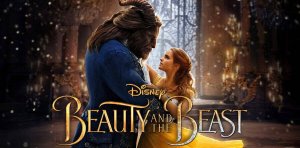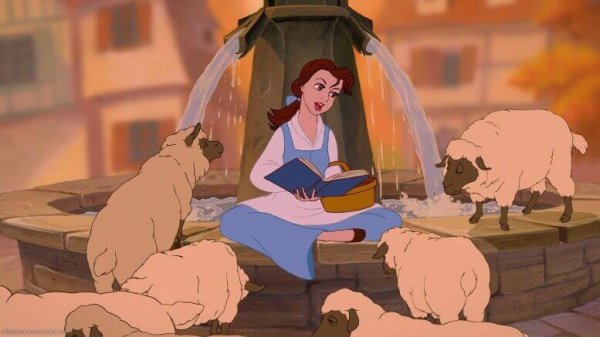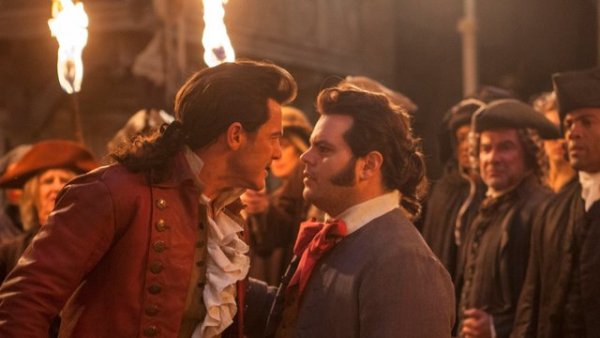Beauty And The Beast - Bringing A Classic Up To Date


Written and verified by the psychologist Sergio De Dios González
Beauty and the Beast is a tale of French origin, which bears some relation to the myth of Psyche and Cupid that appears in the Latin classic The Golden Ass. Today, of course, we all remember it thanks to the 1991 Disney film version.
Recently, it has made the big screen again, this time in a non-animated version. Directed by Bill Condon, it boasts a cast that features actors such as Ewan McGregor, Ian McKellen and Emma Thompson. Emma Watson plays the role of Belle and Dan Stevens is the Beast.
Disney princesses
In the 90s, the world was crazy about Disney princesses. Most were born in this decade, although some were already veterans, such as Snow White or Cinderella. The truth is that if we order the princesses chronologically, we’ll see the great evolution they have experienced.
Most of these princesses, especially the first ones, conformed to the image of the ideal housewife. They were young, beautiful, and enjoyed doing household chores, reflecting the exemplary woman of that era. All of them have plenty of things in common. A difficult past (they have lost either their mother or father), a stormy situation and a happy ending with their prince. It took Disney a long time to realize that they had to renew these stories, and the changes went very slowly.
The concept of beauty
Belle would be the first to deviate a little (just a little) from the path her predecessors had marked. Bella was special, physically. She was a beautiful young woman, but not a Snow White of unattainable beauty. Her features resembled more common mortals. Of course, the choice of her hair color, chestnut, is one of the most significant. This, together with her brown eyes, would change the idea of what beauty should be.

Chestnut is the forgotten color in the world of hair. We only need to think for a while about what we see on screen or hear in poetry and in song. Even in adverts for hair dye you very rarely see a chestnut color featured. Generally, when people want to represent beauty they use blond or black hair, even red hair (although this is the least common). Chestnut is almost non-existent.
Belle’s origin
Belle comes from a small French village, from a place where the people have little or no interest in reading. Belle, however, has a great passion for reading. Because of this she earns the nickname “weirdo”. Reading allows her to escape a little from the life in her village, and to get to know other worlds and to expand her horizons. Belle is a girl who is thirsty for knowledge.
As we see, Belle is a smart, confident girl who breaks the previous Disney stereotypes a little. But, of course, we wouldn’t be talking about a Disney princess of the 90s if she didn’t have her prince. Belle wouldn’t be the exception. She would also fall into the clutches of love. Although the purpose of the film is to show the power of inner beauty, it still features a princess that who has her happy ending with her prince, who, although he was once a beast, is transformed into a handsome man.
Beauty and the Beast – a new approach
There’s no doubt that the intention of the 1990 film was a good one. The lesson we all (or almost all) learnt was that beauty is on the inside. Belle falls in love with the Beast for what he is, despite his appearance. I believe we must take the transformation of the Beast as a representation of his true self, a reflection of his inner beauty. Beauty, in addition to being subjective, is also influenced by what that person is like on the inside.
The truth is that Disney is progressing in terms of female representation in its latest films. But what is very interesting in this new 2017 version of Beauty and the Beast, is that it includes some little touches that gives the old story a fresh look.
It was inevitable that this new version would remind us of its animated sister. Visually, the similarities are unmistakeable, from the costumes and the choice of actors to the scenery and castle. On top of that, the soundtrack from the nineties is virtually unchanged.
Faithful to the original
This new version has shown a clear respect for its predecessor. When film producers decide to make an adaptation of a classic, they must be very aware that the public will have a lot of love for the previous version. Sometimes producers can go to the other extreme and create something completely different and far away from the original idea.
Beauty and the Beast follows the main plot, adding some elements that clarify the gaps in the animated version. One example of this is the explanation of what happened to Belle’s mother, which brings us closer to the characters and helps us to empathize more with them.
On the other hand, it includes a good number of black characters that intermingle with the whites in a totally normal way. Some even possess accents that we don’t usually associate with black people like Madame de Garderobe, who is black with an Italian accent. This clearly demonstrates that skin color isn’t necessarily linked to someone’s origin.
Along the same lines, we find a lot of interracial couples, such as the aforementioned Madame de Garderobe and her husband, Master Cadenza; or Lumière, the legendary candelabra, and his beloved Plumette, who is also black.

The character of Le Fou
In addition, throughout Beauty and the Beast, we realize that Le Fou, whose name in French means crazy, has changed quite a lot compared to the 1990 version. In the previous film, he was a character who lived up to his name and was one of Gaston’s subjects. We now realize that his devotion to Gaston perhaps goes further and that he may not be as crazy as he seems.
There is a very significant scene in which Madame Garderobe dresses three young man as women. Two of them get upset, but one of them seems comfortable and smiles in gratitude. It is very subtle, but important at the same time. In addition, at the end of the film we see how Gaston ends up dancing with Le Fou and both seem quite happy. In this way, they normalize what should be normal and reaffirm the message that beauty is in the inside.
It doesn’t matter what gender or race you are. None of that is important; love goes beyond all that and transcends what could be barriers or impositions. In my opinion, this new version of Beauty and the Beast is important. It was necessary to include all these different types of relationships in a classic film like this that speaks of loving regardless of appearances. It is a small step, but very significant and very necessary nowadays. If we continue along this path then, perhaps, some day in the future it will no longer be necessary to be “beautiful” to be a Disney princess.
“It’s not wrong to be beautiful; what is wrong is the obligation to be “
– Susan Sontag-
All cited sources were thoroughly reviewed by our team to ensure their quality, reliability, currency, and validity. The bibliography of this article was considered reliable and of academic or scientific accuracy.
- Bradshaw, P. (2017, 3 de marzo). Beauty and the Beast review – Emma Watson makes a perfect Belle in sugar-rush romance. The Guardian. https://www.theguardian.com/film/2017/mar/03/beauty-and-the-beast-review-emma-watson-disney
- Felperin, L. (2017, 3 de marzo). ‘Beauty and the Beast’: Film Review. The Hollywood Reporter. https://www.hollywoodreporter.com/movies/movie-reviews/beauty-beast-review-982373/
- Gleiberman, O. (2017, 3 de marzo). Film Review: ‘Beauty and the Beast’. https://variety.com/2017/film/reviews/beauty-and-the-beast-review-emma-watson-1202001341/
- IMDb. (2017). La bella y la bestia (Beauty and the Beast). Consultado el 12 de mayo de 2023. https://www.imdb.com/title/tt2771200/
- RottenTomatoes. (2017). Beauty and the Beast. Consultado el 12 de mayo de 2023. https://www.rottentomatoes.com/m/beauty_and_the_beast_2017
- Sims, D. (2017, 15 de marzo). Beauty and the Beast: A Tale as Old as Time, Told Worse. The Atlantic.
https://www.theatlantic.com/entertainment/archive/2017/03/beauty-and-the-beast-remake-review/519603/ - Scott, A. O. (2017, 3 de marzo). Review: ‘Beauty and the Beast’ Revels in Joy and Enchantment. The New York Times. https://www.nytimes.com/2017/03/03/movies/beauty-and-the-beast-review.html
This text is provided for informational purposes only and does not replace consultation with a professional. If in doubt, consult your specialist.








